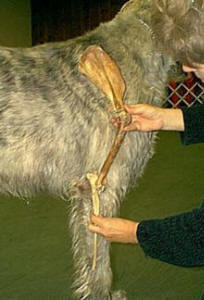Laurie's Blogs.
Jul 2017
Blog - Shockwave & Shoulder Pathology

For this blog post, I just wanted to share one of the articles reviewed in the latest FourLeg News. Cheers!
Becker W, Kowaleski MP, McCarthy RJ, Blake CA. Extracorporeal shockwave therapy for shoulder lameness in dogs. J Am Anim Hosp Assoc 51: 15-19, 2015.
This was a retrospective study of dogs that had received shockwave therapy for shoulder lameness at Cummings School of Veterinary Medicine at Tufts University. Dogs included in the study were those that had failed conservative management (rest, NSAIDS and nutraceuticals), and had lameness attributable to instability, calcifying and inflammatory injuries of the shoulder.
Records of 15 dogs that met the criteria were identified. Diagnosis was based on a combination of physical exam, radiography, ultrasonography, and/or arthroscopy of the shoulder. Five had biceps tendinopathy, four had medial shoulder instability, three had supraspinatus tendinopathy, one had both supraspinatus and a biceps tendinopathy, and one with synovial osteochondroma.
Nine dogs were physically evaluated 3-4 weeks after their last shockwave treatment and lameness was improved in 6 and normal in the remaining 3.
Eleven clients were available for telephone interviews (4 months – 61 months following intervention). Seven out of 11 dogs (64%) were considered by their owners to be either better or normal. Three dogs were considered to have the same degree of lameness as pretreatment.
ESWT details:
A focused electrohydraulic extracorporeal shockwave unit was utilized (Versatron 4 Paws – Pulse Vet Technologies). Three sessions in total were provided with 3 – 4 week intervals. ESWT electrode settings were based on recommendations from the manufacturer. The activity of the dogs was limited to short walks on a hand-held leash after the first treatment until evaluation 3–4 wk after the final treatment (i.e., 12–16 wk total). Analysis of the data revealed the mean number of impulses/treatment was 1103 +/- 340 (range, 750–1500) and the mean energy level of the impulse delivered was 0.24 +/- 0.03 mJ/mm2 (range, 0.21–0.26 mJ/mm2).
Laurie’s Thoughts:
Great! We know that shockwave can be of value. Clinically, we know that great rehab is more than just one treatment modality and should also include other therapies to provide a comprehensive therapeutic plan.


